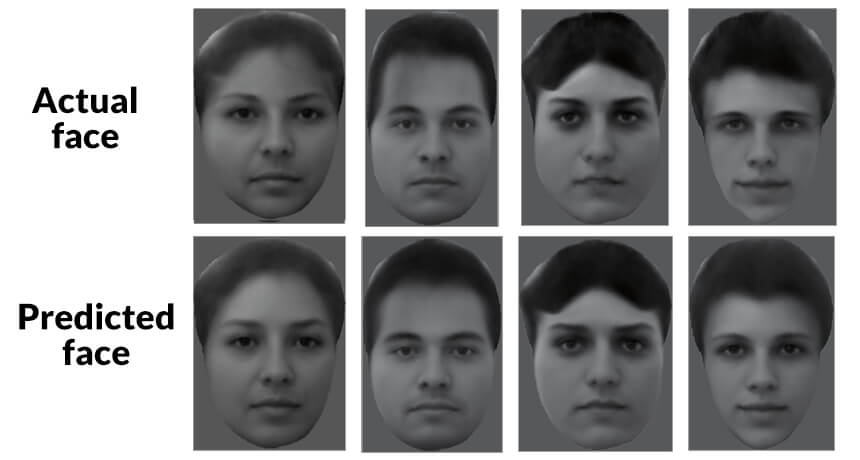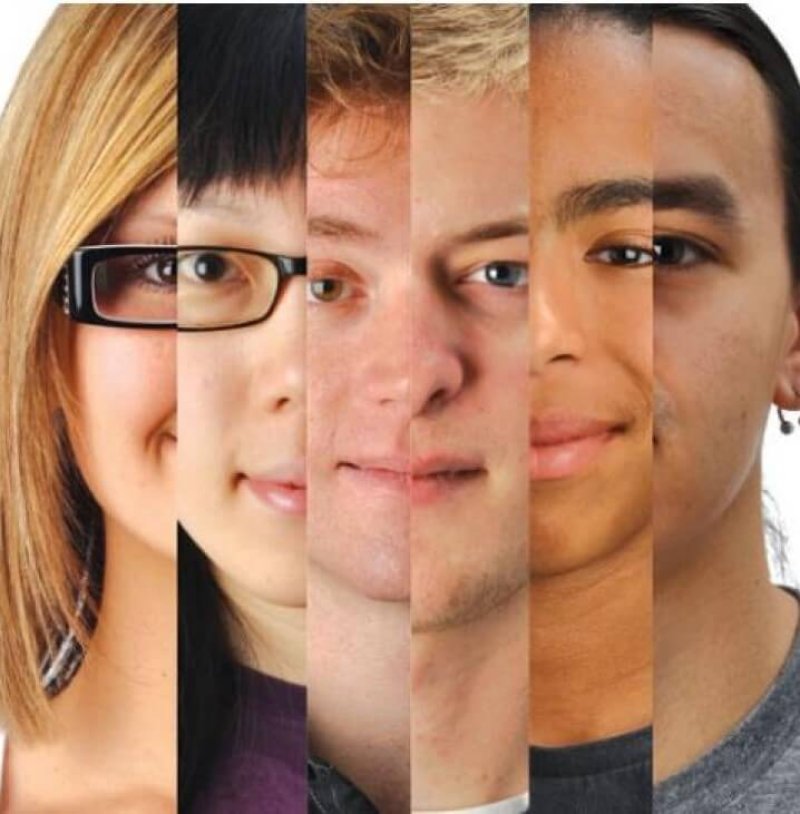A monkey’s brain builds a picture of a human face somewhat like a Mr. Potato Head — piecing it together bit by bit.
The code that a monkey’s brain uses to represent faces relies not on groups of nerve cells tuned to specific faces…but on a population of about 200 cells that code for different sets of facial characteristics.
…
Doris Tsao…and coauthor Le Chang used statistical analyses to identify 50 variables that accounted for the greatest differences between 200 face photos…While projecting the faces one at a time onto a screens in front of two macaque monkeys, the team recorded the activity in single neurons in parts of the monkey’s temporal lobe known to respond specifically to faces. All together, the recordings captured activity from 205 neurons…Adding together the features conveyed by each cell’s activity creates a picture of a complete face.

“People view neurons as black boxes,” says Ed Connor, a neuroscientist at Johns Hopkins University. “This is a striking demonstration that you can really understand what the brain is doing.”
[Read the full study here]
The GLP aggregated and excerpted this blog/article to reflect the diversity of news, opinion, and analysis. Read full, original post: Brains encode faces piece by piece































